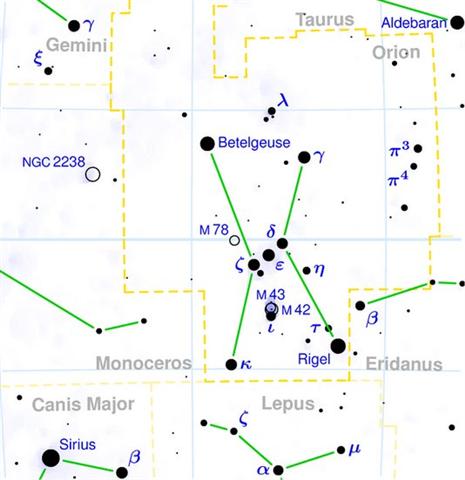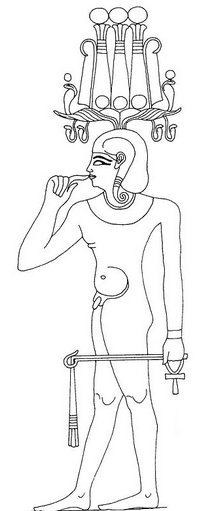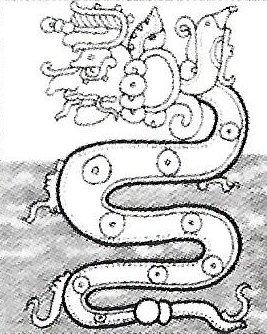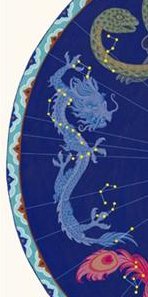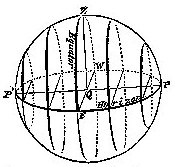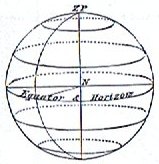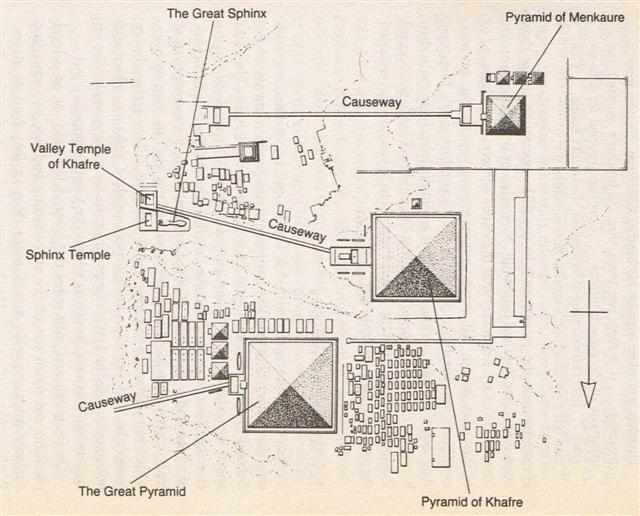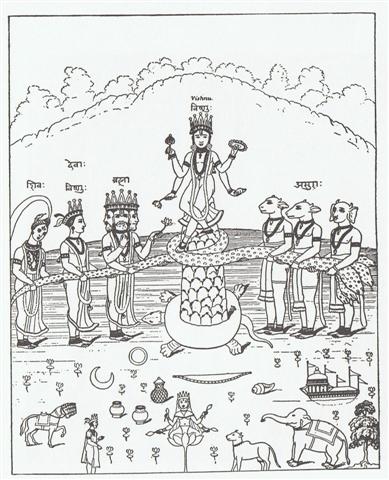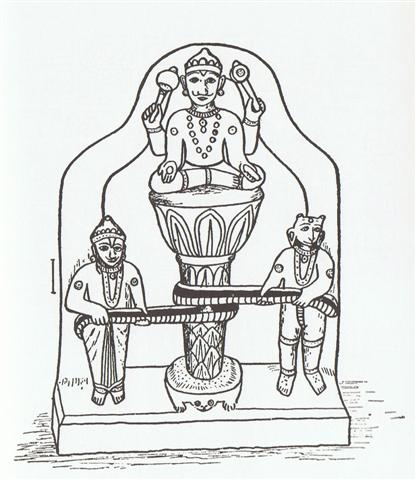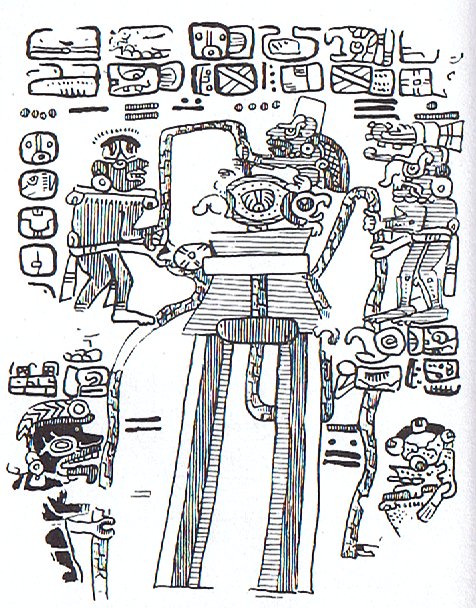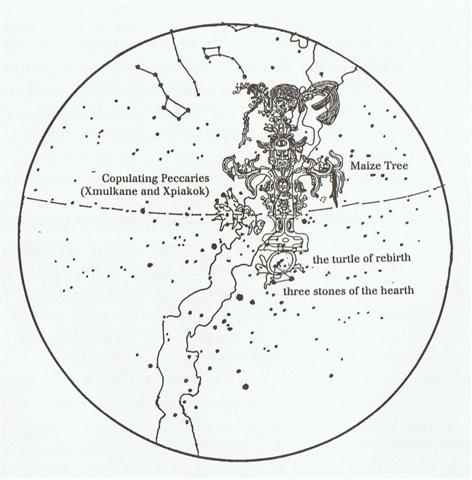410. When the stars had changed their right ascension positions in the Sun calendar due to the precession and also due to their own proper motions there gradually accumulated a need to update the structure which connected the stars with the points in the global network. ... In astronomy, an epoch specifies a precise moment in time. The positions of celestial objects and events, as measured from earth, change over time, so when measuring or predicting celestial positions, the epoch to which they pertain must be specified. A new standard epoch is chosen about every 50 years ... But when the net itself needed updating it was a task for Old Spider: ... A very detailed myth comes from the island of Nauru. In the beginning there was nothing but the sea, and above soared the Old-Spider. One day the Old-Spider found a giant clam, took it up, and tried to find if this object had any opening, but could find none. She tapped on it, and as it sounded hollow, she decided it was empty. By repeating a charm, she opened the two shells and slipped inside. She could see nothing, because the sun and the moon did not then exist; and then, she could not stand up because there was not enough room in the shellfish. Constantly hunting about she at last found a snail. To endow it with power she placed it under her arm, lay down and slept for three days. Then she let it free, and still hunting about she found another snail bigger than the first one, and treated it in the same way. Then she said to the first snail: 'Can you open this room a little, so that we can sit down?' The snail said it could, and opened the shell a little. Old-Spider then took the snail, placed it in the west of the shell, and made it into the moon. Then there was a little light, which allowed Old-Spider to see a big worm. At her request he opened the shell a little wider, and from the body of the worm flowed a salted sweat which collected in the lower half-shell and became the sea. Then he raised the upper half-shell very high, and it became the sky. Rigi, the worm, exhausted by this great effort, then died. Old-Spider then made the sun from the second snail, and placed it beside the lower half-shell, which became the earth ...
A calendar star net should be constructed by going out with 8 'limbs' from the star ('spider' or 'octopus') at the top, and when a new net had to be made it was because a new star had climbed up (kake) to the top. Such a change was much more radical than updating a specific net to a new epoch. The whole 'ship' had to be rebuilt. ... Taetagaloa [Not-Tagaroa] goes right over there and steps forward to the stern of the canoe saying - his words are these: 'The canoe is crooked.' (kalo ki ama). Instantly Likāvaka is enraged at the words of the child. Likāvaka says: 'Who the hell are you to come and tell me that the canoe is crooked?' Taetagaloa replies: 'Come and stand over here and see that the canoe is crooked.' Likāvaka goes over and stands right at the place Taetagaloa told him to at the stern of the canoe. Looking forward, Taetagaloa is right, the canoe is crooked. He slices through all the lashings of the canoe to straighten the timbers. He realigns the timbers. First he must again position the supports, then place the timbers correctly in them, but Kuikava the son of Likāvaka goes over and stands upon one support. His father Likāvaka rushes right over and strikes his son Kuikava with his adze. Thus Kuikava dies. Taetagaloa goes over at once and brings the son of Likāvaka, Kuikava, back to life. Then he again aligns the supports correctly and helps Likāvaka in building the canoe. Working working it is finished ...
When the creator of the great Koba calendar text went all the way back to the beginning of the present time it meant he had used the well-known present calendar structure in order to describe the ancient dates. The ancient Sun dates could be found out by extrapolations back in time using the very precise Mayan measure for a year (better than our own). ... In three magnificent texts at the site of Koba, scribes recorded it as one of the largest finite numbers we humans have ever written. According to these inscriptions, our world was created on the day 4 Ahaw 8 Kumk'u. On this day all the cycles of the Maya calendar above twenty years were set at thirteen - that is to say, the cycles of 400 years, 8,000 years, 160,000 years, 32,000,000 years, and so on, all the way up to a cycle number extending to twenty places (2021 * 1360-day year). In our calendar, this day fell on August 13, 3114 BC.
To understand what this means, we need a little scale. The thirteens in this huge number act like the twelve in our cycles - the next hour after twelve is one. Thirteen changed to one as each of these cycles in the Maya calendar was completed, therefore, we have the following sequence:
Each of the years, called a tun by the Maya, in these dates is composed of 360 days. If we return to the Creation date with its twenty cycles set at thirteen, we see that it will take 41,943,040,000,000,000, 000,000,000,000 tuns for the highest cycle to change from thirteen to one ...
Counting from the day when Itzam-Yeh was defeated (removed from his position as 'top bird') to when our present 'world' was created there were 25 * 73 + 84 = 1909 days. This number equals 83 * 23. We can recognize 83 as the right ascension position (at the time of rongorongo) of 'the Magician' (λ Orionis), who would 'restore life' 5 days before Betelgeuze:
Before the Sun calendar had been created there was a revolving sky, but when it had been decided to let the star at the Pole define origo (0h) stability and peace was generated - as if reflected from a gyroscope.
Polaris became the star at the top much later than in 5 February 3112 BC, but the creator of the Koba document evidently used Polaris because it was well known and therefore the proper point to use for going far back in time. The creator of the G text could also have used Polaris for such a purpose:
In recognition of the change to 'our present world' he seems to have used the difference between 70 and 64, measuring 6 days, in order to document day 80 (= 91 - 11):
In Ga1-6 there is a 'before' (at left) and 'after' (at right). At left there is a sign of 'feeding' (ímplying growth) and at right, in contrast, a sign of the illuminated night sky cupola, emblem of stability as if time had stopped. Without the spectacular corresponding glyphs early on side and early on side b of the C tablet I could hardly have dared state that this was the intended meaning of Ga1-6:
6 days were to be added in order to reach all the way back to *70, which ought to remind us of the short life of Menkaure: ... Menkaure was allegedly a much more benevolent Pharaoh than his predecessors. According to legends related by Herodotus, he wrote the following: This Prince (Mycerinus) disapproved of the conduct of his father, reopened the temples and allowed the people, who were ground down to the lowest point of misery, to return to their occupations and to resume the practice of sacrifice. His justice in the decision of causes was beyond that of all the former kings. The Egyptians praise him in this respect more highly than any other monarchs, declaring that he not only gave his judgements with fairness, but also, when anyone was dissatisfied with his sentence, made compensation to him out of his own purse and thus pacified his anger. The Gods however ordained that Egypt should suffer tyrannical rulers for a hundred and fifty years according to this legend. Herodotus goes on: ... An oracle reached him from the town of Buto, which said 'six years only shalt thou live upon this earth, and in the seventh thou shalt end thy days'. Mycerinus, indignant, sent an angry message to the oracle, reproaching the god with his injustice - 'My father and uncle,' he said 'though they shut up the temples, took no thought of the gods and destroyed multitudes of men, nevertheless enjoyed a long life; I, who am pious, am to die soon!' There came in reply a second message from the oracle - 'for this very reason is thy life brought so quickly to a close - thou hast not done as it behoved thee. Egypt was fated to suffer affliction one hundred and fifty years - the two kings who preceded thee upon the throne understood this - thou hast not understood it'. Mycerinus, when this answer reached him, perceiving that his doom was fixed, had lamps prepared, which he lighted every day at eventime, and feasted and enjoyed himself unceasingly both day and night, moving about in the marsh-country and the woods, and visiting all the places he heard were agreeable sojourns. His wish was to prove the oracle false, by turning night into days and so living twelve years in the space of six ...
2 * 150 = 300 and 366 - 300 - 6 = 60, which added to 48 (= 413 - 365) became 108 (= 540 / 5) → 1080, 10800, 108000 etc: ... It is known that in the final battle of the gods, the massed legions on the side of 'order' are the dead warriors, the 'Einherier' who once fell in combat on earth and who have been transferred by the Valkyries to reside with Odin in Valhalla - a theme much rehearsed in heroic poetry. On the last day, they issue forth to battle in martial array. Says Grimnismal (23): 'Five hundred gates and forty more - are in the mighty building of Walhalla - eight hundred 'Einherier' come out of each one gate - on the time they go out on defence against the Wolf.' That makes 432,000 in all, a number of significance from of old. This number must have had a very ancient meaning, for it is also the number of syllables in the Rigveda. But it goes back to the basic figure 10,800, the number of stanzas in the Rigveda (40 syllables to a stanza) [40 * 270 = 10800] which, together with 108, occurs insistently in Indian tradition, 10,800 is also the number which has been given by Heraclitus for the duration of the Aiōn, according to Censorinus (De die natali, 18), whereas Berossos made the Babylonian Great Year to last 432,000 years. Again, 10,800 is the number of bricks of the Indian fire-altar (Agnicayana). 'To quibble away such a coincidence', remarks Schröder, 'or to ascribe it to chance, is in my opinion to drive skepticism beyond its limits.' Shall one add Angkor to the list? It has five gates, and to each of them leads a road, bridging over that water ditch which surrounds the whole place. Each of these roads is bordered by a row of huge stone figures, 108 per avenue, 54 on each side, altogether 540 statues of Deva and Asura, and each row carries a huge Naga serpent with nine heads. Only, they do not 'carry' that serpent, they are shown to 'pull' it, which indicates that these 540 statues are churning the Milky Ocean, represented (poorly, indeed) by the water ditch, using Mount Mandara as a churning staff, and Vasuki, the prince of the Nagas, as their drilling rope. (Just to prevent misunderstanding: Vasuki had been asked before, and had agreeably consented, and so had Vishnu's tortoise avatar, who was going to serve as the fixed base for that 'incomparably mighty churn', and even the Milky Ocean itself had made it clear that it was willing to be churned.)
The 'incomparably mighty churn' of the Sea of Milk, as described in the Mahabharata and Ramayana. The heads of the deities on the right are the Asura, with unmistakable 'Typhonian' characteristics. They stand for the same power as the Titans, the Turanians, and the people of Untamo, is short, the 'family' of the bad uncle, among whom Seth is the oldest representative, pitted against Horus, the avenger of his father Osiris. The simplified version of the Amritamanthana (or Churning of the Milky Ocean) still shows Mount Mandara used as a pivot or churning stick, resting on the tortoise. And here, also, the head on the right has 'Typhonian' features. The whole of Angkor thus turns out to be a colossal model set up for 'alternative motion' with true Hindu fantasy and incongruousness to counter the idea of a continuous one-way Precession from west to east ...
... When this tremendous task had been accomplished Atea took a third husband, Fa'a-hotu, Make Fruitful. Then occurred a curious event. Whether Atea had wearied of bringing forth offspring we are not told, but certain it is that Atea and her husband Fa'a-hotu exchanged sexes. Then the eyes of Atea glanced down at those of his wife Hotu and they begat Ru. It was this Ru who explored the whole earth and divided it into north, south, east, and west ... Hotu. Ta.: hotu, to produce fruit, Sa.: fotu, id. Mgv.: akahotu, the September season. Churchill. H.: Hoku, Night of the full moon. When this moon set before daylight it was called Hoku Palemo, Hoku that slips away. When it set after daylight it was called Hoku Ili, grounded Hoku. Ka mahina o Hoku, the full moon of the night Hoku. Cf. hōkū, star. Hō kū, star. (PPN fetu'u). Wehewehe.
|
||||||||||||||||||||||||||||||||||||||||||||||||||||||||||||||||||||||||||||||||||||||||||||||||||||||||||||||||||||||||||||||||||||||||||||||||||||||||||||||||||||||||||||||||||||||||||||||||||||||||||||||||||||||||||||||||||||||||||||||||||||||||||||||||||||||||||||||||||||||||||||||||||||||||||||||||||||||||||||||||||||||||||||||||||||||||||||||||||||||||||||||||||||||||||||||||||||||||||||||||||||||||||||||||||||||||


